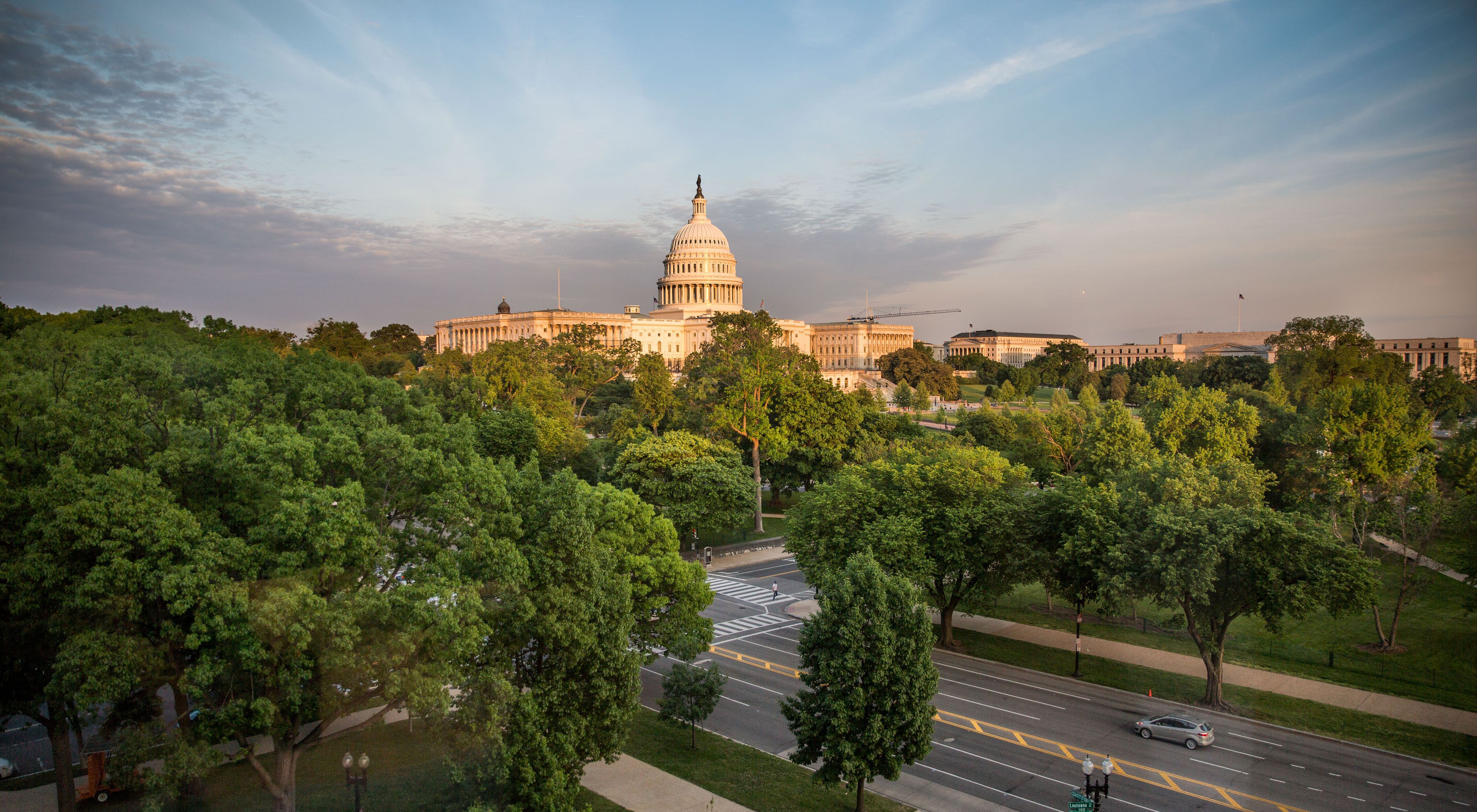What Will It Take to Get United States Climate Action?
By Jason Albritton, Director of U.S. Climate and Energy Policy, The Nature Conservancy
A recurring media drumbeat tells us how divisive the issue of climate change is in the United States, how the country is at a political stalemate. The words “climate change” are so politically charged in the United States that some excise the term from public discourse altogether. Others press for urgent action and shame those they perceive as failing to advance ambitious climate solutions. The conventional wisdom is that such polarized camps cannot possibly find common ground.
Yet Americans agree on a lot of things with respect to climate change. Seven in 10 Americans believe that climate change is happening. And 6 in 10 are concerned about it. When bringing up solutions to address climate change, such as increasing the use of renewable energy and energy efficiency, people overwhelmingly support it. We all want clean air. We all want affordable, cleaner energy. When looking at how the United States will power homes, businesses and communities this century and what we need to keep the lights on and energy flowing, there’s quite a bit that Americans agree on.
The problem with advancing climate change policies isn’t that we don’t know what to do, or that we don’t like the solutions. It’s that Americans can’t seem to get a productive conversation going about them. People are locked into their political posturing or feel that conversation won’t get anyone closer to an agreement. Indeed, 62 percent of Americans never talk to their friends and family about climate change. Less than half hear about climate change in conversations on a regular basis. And we can’t solve a problem when we won’t even talk about it.
That is changing. In Congress, a bipartisan effort is building support for climate action. The House Climate Solutions Caucus, led by Carlos Curbelo (Republican) and Ted Deutch (Democrat), both of Florida, has expanded in the last year from a dozen to the latest count of 70 members. This is a remarkable growth rate in an environment where the United States is supposedly in “gridlock” on climate. This growth rate is even more extraordinary in light of the Caucus membership rules—a Democrat must join at the same time as a Republican. Thus, the Caucus boasts a truly bipartisan profile—half Republicans, half Democrats. We applaud this effort.
At The Nature Conservancy, we strive to build productive conversations on climate change and clean energy among various stakeholders. We seek the common ground that serves as a starting point to drive durable actions. In New Hampshire, this means bringing together small businesses to promote the benefits of clean energy and energy efficiency with state legislators in an Energy Week event. In Idaho, it means convening a statewide two-day Summit to discuss market-based climate change solutions with a wide range of participants, including power companies, environmental groups, Native American organizations and forestry companies. In Ohio, it means conducting a statewide poll that demonstrates a widespread desire for more renewable energy, even in counties that historically are part of “coal country.” Everywhere, these dialogues illustrate that people are eager to talk about their observations and opinions, and about climate and clean energy solutions.
Despite the productive conversation the Climate Solutions Caucus has started, it has come under some fire for not moving fast enough to address the urgent need for climate action. Many Americans share a desire for immediate action. But effective action first requires recognition of the problem and discussions about the available solutions. In Congress, where action has been stalled for many years, the Caucus is actively promoting the conversations that are needed for action.
The Caucus has quadrupled its size in a year, a remarkable feat given the state of political discourse on this issue. Even with its relatively brief history, the Caucus is starting to be an important voice in the climate debate. Last year, the Caucus played a significant role in beating back an attempt to eliminate the requirement that the Defense Department consider climate change in its operations assessments. Caucus members have also proposed bipartisan legislation to advance clean energy technologies that will reduce greenhouse gas emissions, such as the recently introduced Challenges and Prizes for Climate Act, and legislation to extend tax credits for a variety of “orphaned” clean energy technologies. This is just a start, and more ambitious action is needed. However, expecting a relatively new and rapidly expanding group to immediately deliver all the desired results is unrealistic and neglects how important it is just to raise the visibility of climate as an issue is in an otherwise deeply divided political context.
Quote
Effective action first requires recognition of the problem and discussions about the available solutions.
The growth of the Caucus demonstrates a desire for a bipartisan conversation about climate solutions in the United States, and an increasing appetite for action. We need to encourage the ongoing conversation even as we urge the Caucus to be more ambitious. It is difficult to build a productive bipartisan conservation if those constructively involved are criticized for not doing more or moving fast enough. Comprehensive, durable climate change solutions that can withstand the test of time will not magically appear. These solutions require hard work and committed champions on both sides of the political aisle. The conversations we have and the bridges we build are time consuming, but they are essential if we are to really address the climate crisis.
